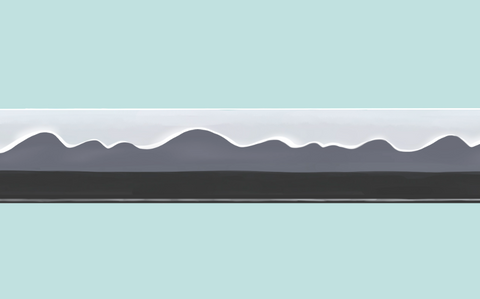Tou-ran-ba in Japanese Katana terminology
濤瀾刃 (Tou-ran-ba)
What is Tou-ran-ba in Japanese Katana terminology?
Tou-ran-ba is a type of blade pattern (Hamon) in Japanese swords. It is also called ""濤瀾乱刃"" (Tou-ran-midare-ba). This blade pattern (Hamon) was initiated by the swordsmith ""津田越前守助広"" (Tsuda Echizen no Kami Sukehiro), who was active in Settsu Province (now Osaka Prefecture) during the Enpo years (1673-1681) of the Edo period.
The ""大互の目乱れ"" (Oo-gunome-midare) is expressed as if large waves are lapping, and its stunning blade pattern (Hamon) is said to have surprised the world. The Tou-ran-ba influenced not only the swordsmiths in Osaka but also those all over Japan.
In addition to Tsuda Echizen no Kami Sukehiro, the swordsmiths who were good at Tou-ran-ba were ""近江守助直"" (Omi no Kami Suke-nao), a famous swordsmith as the successor of Tsuda Echizen no Kami Sukehiro, ""尾崎助隆"" (Ozaki Suke-taka), a representative swordsmith of Osaka Shin-shin-to, and ""市毛徳鄰"" (Ichige Nori-chika/Toku-rin), a swordsmith of the Mito clan.
The ""脇差 銘 津田越前守助広 延宝五年二月日"" is a Wakizashi made by Tsuda Echizen no Kami Sukehiro in the early Edo period. This Wakizashi features the Tou-ran-ba, which is mixed with angular blades here and there, demonstrating the skill of Tsuda Echizen no Kami Sukehiro.







